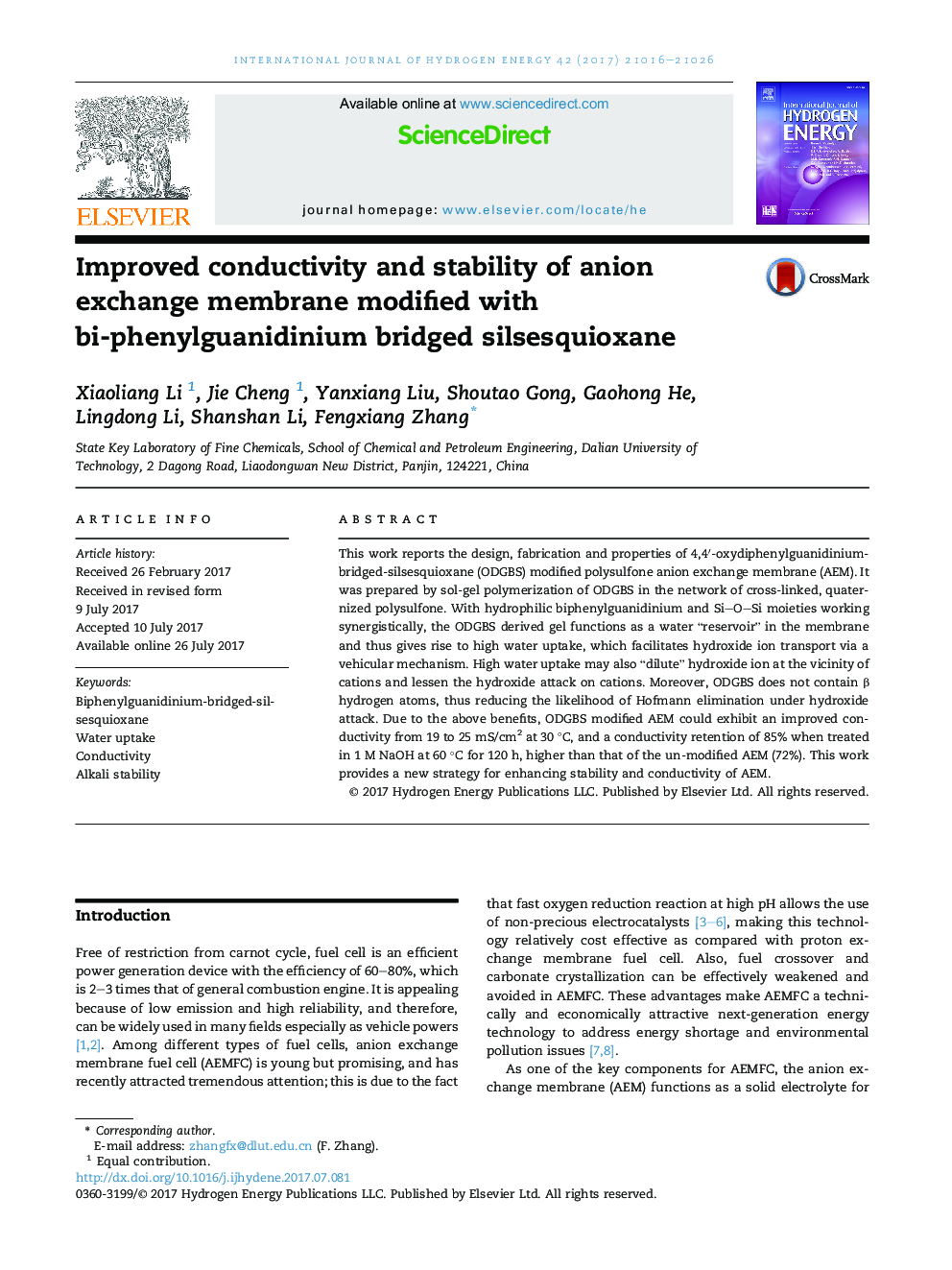| Article ID | Journal | Published Year | Pages | File Type |
|---|---|---|---|---|
| 5145961 | International Journal of Hydrogen Energy | 2017 | 11 Pages |
â¢4,4â²-oxydiphenylguanidine (ODG) and its silsesquioxane (ODGBS) were synthesized.â¢ODGBS and ODG were used to fabricate AEM containing ODGBS based hydrogel.â¢The hydrogel improves AEM conductivity & alkali stability due to high water content.
This work reports the design, fabrication and properties of 4,4â²-oxydiphenylguanidinium-bridged-silsesquioxane (ODGBS) modified polysulfone anion exchange membrane (AEM). It was prepared by sol-gel polymerization of ODGBS in the network of cross-linked, quaternized polysulfone. With hydrophilic biphenylguanidinium and SiOSi moieties working synergistically, the ODGBS derived gel functions as a water “reservoir” in the membrane and thus gives rise to high water uptake, which facilitates hydroxide ion transport via a vehicular mechanism. High water uptake may also “dilute” hydroxide ion at the vicinity of cations and lessen the hydroxide attack on cations. Moreover, ODGBS does not contain β hydrogen atoms, thus reducing the likelihood of Hofmann elimination under hydroxide attack. Due to the above benefits, ODGBS modified AEM could exhibit an improved conductivity from 19 to 25 mS/cm2 at 30 °C, and a conductivity retention of 85% when treated in 1 M NaOH at 60 °C for 120 h, higher than that of the un-modified AEM (72%). This work provides a new strategy for enhancing stability and conductivity of AEM.
